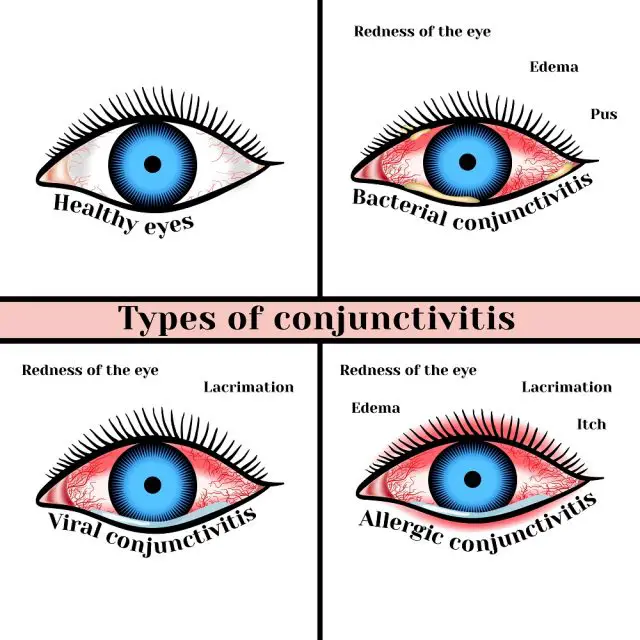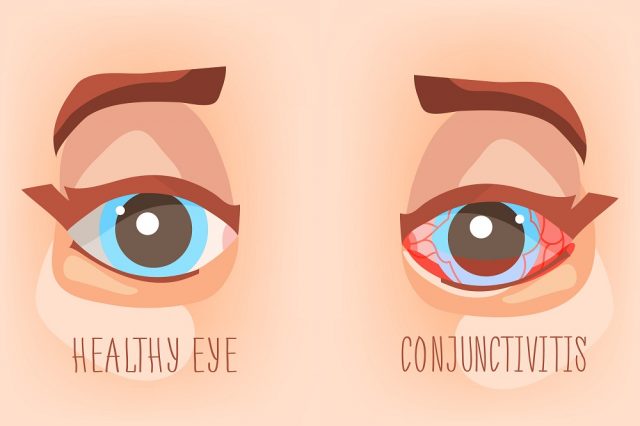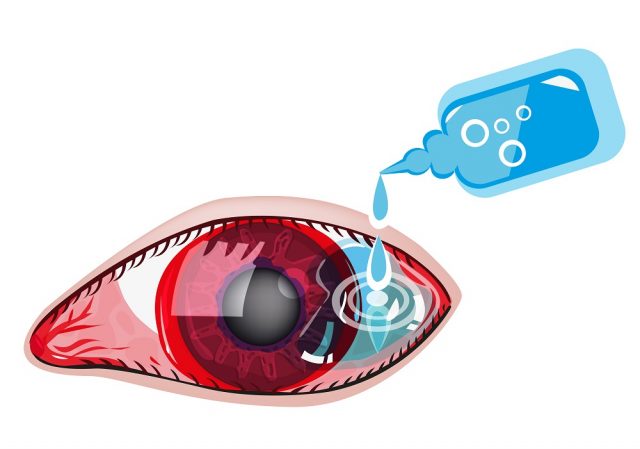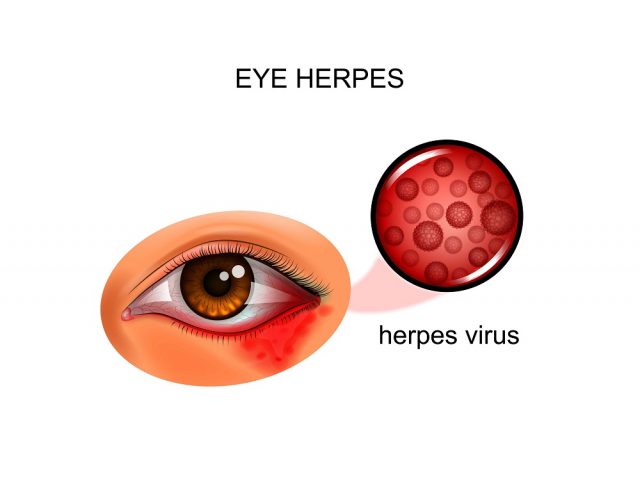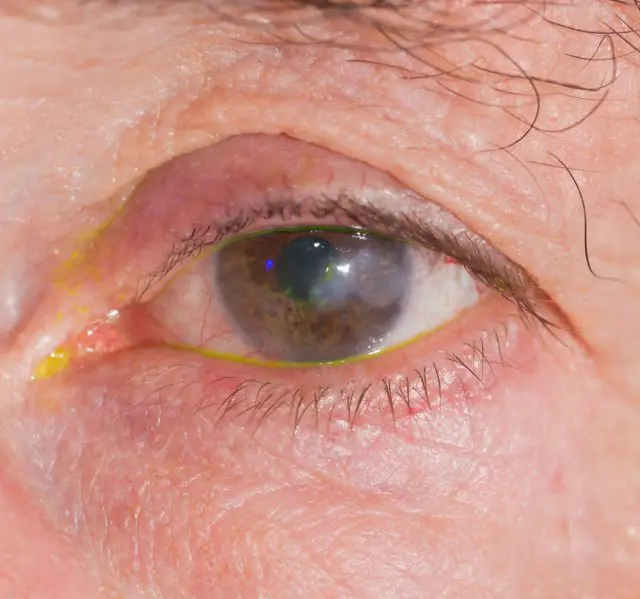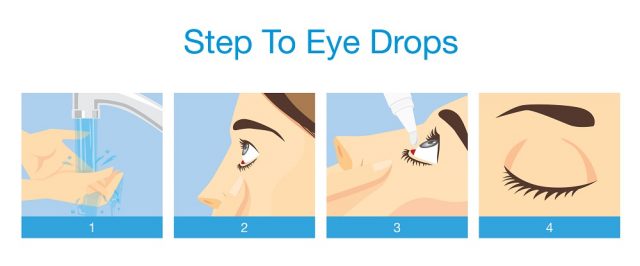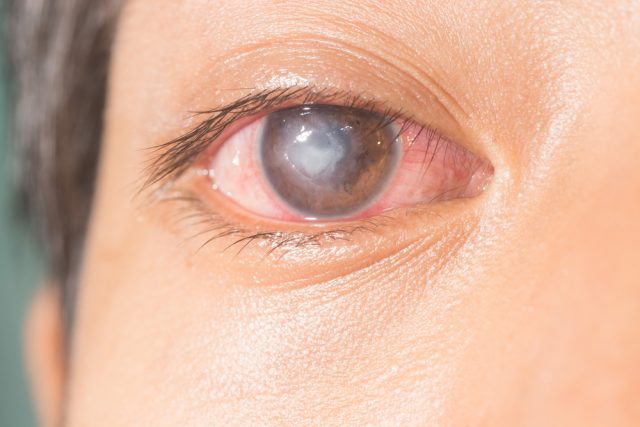Viral Eye Infection: Types, Symptoms, Treatment
Eye infections are some troublesome health conditions caused by few fungal, bacterial and viral agents. Medical health researchers have collected details about several types of eye infections and each one of them has different causes as well as treatments. Note that, all parts of eyes are prone to infections, they can affect one or even both eyes at a time and are common for all age groups. Few commonly observed symptoms of eye infections can be reduced vision, discharge, redness and irritation. However, treatments for these eye diseases/infections completely depend upon cause behind their occurrence.
How you get an eye infection?
Infections can target any part of eyes ranging from the cornea to eyelids while including the retina at the back portion of the eye as well. These issues have become common these days that you can easily find someone around you suffering from certain kind of eye infection. As already discussed, eye infections can be fungal, viral and bacterial as well. People that wear contact lenses so often are at high risk of eye infections because these lenses block the flow of oxygen towards corneas. Infections may also happen because of fungal or bacterial build-up that is caused by inappropriately disinfected contact lenses. Some of the highest reported cases of eye infections include blepharitis, pink eye, and trachoma. Note that, trachoma is common in the poor countries and it can also lead to blindness.
Most eye infections are observed to be self-limiting; however, others can be recovered with minimal or no treatment. There are very rare chances when these eye infections take a longer time to recover or need special medications for treatment. Generally, all eye infections are not considered as dangerous; still, it is better to stay in touch with your medical health professional to avail right treatment.
Types of Viral Eye Infections
Viral eye infections may cause some discomfort in your eyes while disturbing your normal vision. Your eye doctor may prescribe some medications depending upon the symptoms you are facing for the eye infection. Discomfort related to most eye infections can be treated with eye drops. As cases of viral eye infections are increasing day by day, knowing details about them can help you better to avoid problems.
Viral Conjunctivitis or Pink Eye
This type of eye infection happens due to inflammation of eye conjunctiva. It can cause irritation, swelling of the eye while turning it into red or pink color. Some patients also develop lots of mucus in their eyes due to this viral infection. Note that conjunctiva is a very thin layer of membrane or cells that are present between the inner surface of eyelids and the white portion of eyes. Due to inflammation, the tiny blood capillaries or blood vessels in the conjunctiva region become prominent. This condition leads to discomfort with the red appearance of eyes and may last for several weeks.
There are three major types of conjunctivitis:
- Irritant or Chemical Conjunctivitis:
Some irritation in the eye can cause soreness and inflammation. This irritant can be either an eyelash that gets misdirected into the eye area or the harmful chlorine water that interacts with eyes during swimming in the pool.
- Allergic Conjunctivitis:
This type of viral conjunctivitis happens when some allergen such as pollen, dust mite or animal fur forms a contact with the eye. This allergen actually forceoverreaction in the immune system that further causes some inflammation and irritation.
- Infective Conjunctivitis:
It is a bacteria or virus that can cause infection leading to pink or watery eyes. It can also develop some sticky coating around eyelashes as well as mucus in eyes.
Symptoms:
The most commonly noticed signs and symptoms of pink eye viral infection include:
- Redness due to widening and irritation of blood vessels in the conjunctiva region.
- A crusty or sticky coating on eyelashes that is commonly observed after sleep as a result of mucus produced by infection.
- Watery and shiny eyes as tear glands become hyperactive.
- Grittiness and soreness that causes a feeling of sand in eyes.
- Swelling due to repetitive rubbing or inflammation.
- Swollen lymph nodes as they reduce body’s ability to fight infections and the chances of pink eye infection increases.
- Respiratory tract infections.
In most cases, this soreness or redness begins from one eye and then with time it spreads to other as well.
Prevention:
The risks associated with conjunctivitis can be avoided by following few preventive measures:
- Do not rub or touch the eyes.
- Wash hands time to time using warm water and soap. The best idea is to use hand sanitizer when water is not available.
- Never ever wear contact lenses during night hours.
- Follow expert guidelines to maintain eye hygiene.
- Prefer to keep your eyeglasses clean.
- Do not share personal items like pillows and towels.
- Avoid making any contact of your lenses with anyone else.
- It is good to wear goggle when you go to swimming pool. Do not swim if your eyes are already suffering from some kind of infection.
- Make efforts to avoid potential allergens and irritants.
Treatment:
There is no specific treatment for viral conjunctivitis; the patient may generally suffer for 2 or 3 weeks and then symptoms clear automatically. The infection usually starts from one eye and with time it may infect the other one as well. In case if the major cause of this viral infection is herpes simplex virus, the doctors may prescribe antiviral medications for treatment. It is important to stay in touch with doctors to make sure that your eyes are actually healing.
Ocular Herpes
Several cases of the herpes simplex virus are reported every year. You might be aware of the fact that the biggest symptom of herpes virus is cold sores but when someone suffers from ocular herpes, these sores start appearing on eyes as well. It is a major point of discussion these days due to associated discomfort with this disease. In few rare cases, eye herpes can impact the deeper layers of eyes and vision. Type 1herpes basically targets face area and it has so many symptoms including cold sores and fever blisters. Type 2 is a sexually transmitted virus that has a major impact on genital areas but in some cases, it can also affect eyes.
There are generally three major forms of ocular herpes:
- Herpes Keratitis:
This is one of the most common types of eye herpes that is also known as viral corneal infection. This form of ocular herpes affects the topmost layer of eyes or may also cause trouble to the epithelium of cornea that usually heals without leaving any scar behind.
- Stromal Keratitis:
It occurs when the infection starts going deeper into cornea layers. This viral infection is observed to leave some scars behind and it may also cause loss of vision that occasionally leads to blindness. Experts reveal that stromal keratitis is a result of the late response of immune system to an original form of infection. As per stats provided by NEI, around 25 percent of recurring and new cases of eye herpes are related to stromal keratitis.
- Iridocyclitis:
Here is a serious kind of eye herpes that causes inflammation of iris and the surrounding tissue of the eye. It leads to pain, redness, blurred vision and sensitivity to light. Iridocyclitis is a variety of uveitis that has a major impact on a frontal portion of eyes. Sometimes this infection affects the retina and the inner portion of lining leading to herpes retinitis.
Symptoms:
Variety of symptoms are related to ocular herpes infection. In general, it affects both eyes, but chances are that one eye may suffer more trouble as compared to the other one. Few commonly recognized symptoms of herpes are:
- Tearing.
- Redness in eyes.
- Sensitivity to light.
- Headaches.
- Feeling like something is present in eyes that causes continuous irritation.
In some cases, the patients suffer herpes sores on the top portion of eyelids; it may appear like a rash that has blisters. These blisters may stay there for around 3 to 7 days.
Prevention:
The eye herpes can cause repetitive infections, so doctors recommend some antiviral medications on regular basis to avoid the chances of discomfort in future. If they are not diagnosed on time, the recurrent eye herpes can cause serious eye damage. It is important to take antiviral medications for few days before undergoing surgical procedures.
Treatment:
Experts in the medical health industry are still searching for some valuable cure to deal with herpetic eye infections. Doctors generally recommend medications to ease the discomfort and reduce the impact of symptoms and the type of medications usually depend upon the location of eye herpes.
- Eyelids: In case if the ocular herpes infection is located on the eyelids, doctors may prescribe topical ointments as like antibiotic and antiviral ointments. Note that, antibiotic ointments, in this case, are not prescribed to address herpes infection rather they help to avoid the attack of other bacteria on the blistering areas.
- Outer layers: In order to treat eye herpes in the eye’s outmost layer, doctors may usually prescribe some oral antiviral medication or antiviral eye drops. They assist in reducing the troubles caused by a virus and may also shorten its lifespan.

- Deeper eye layers: For this type of virus, you need to use some oral medications and antiviral eye drops. Most commonly, they are steroid eye drops that assist in reducing inflammation.
Corneal Ulcer
The clear layer tissue present at a front portion of the eye is named as the cornea. It works like a window that allows light to enter eyes. Tears work to defend this part of the eye from fungi, viruses, and bacteria. When we talk about corneal ulcer, it is defined as an open sore that is developed on the cornea. This corneal ulcer is a kind of infection that occurs either due to small injuries to the eye or the erosion caused due to contact lenses. If you do not follow proper hygiene for wearing contact lenses; the risks of corneal ulcers increases.
Symptoms:
In order to know if you are suffering from corneal ulcers, it is important to collect knowledge about its common symptoms.
The list includes:
- Itchy and watery eyes.
- Sensitivity to light.
- Pink or red eyes.
- Pus-like
- Stinging or burning sensation in eyes.
- Eye inflammation and sores.
- Excessive tearing and swollen eyelids.
- Blurred vision.
- Foreign body sensation in eyes.
- Presence of a white spot on the cornea.
Experts advise availing immediate treatment for all symptoms of corneal ulcers otherwise, it may lead to blindness. Note that, corneal ulcer actually appears like a white or gray spot on the transparent cornea; sometimes it is too small that one cannot view it without magnification; however, the symptoms do appear in all cases.
Preventions:
The most suitable option to prevent corneal ulcers is to contact your doctor as soon as you feel symptoms of this disease so that they can treat it before the occurrence of any major injury. Other helpful care tips include:
- Do not sleep while wearing contact lenses.
- Sterilize and clean your contacts before you wear them.
- Rinse your eyes carefully to remove the foreign particles.
- Wash your hands properly before touch eyes.
Treatment:
As soon as your doctor identifies the symptoms of a corneal ulcer, they prefer to prescribe doses of antiviral, antifungal and antibacterial eye medications. In case if the condition is already bad, the doctors may recommend you some antibacterial medication as long as they test ulcer scrapings to check out the major cause of the infection. Also, if your eyes are swollen or inflamed, you may need to use corticosteroid eye drops. Doctors may advise you to avoid these things during treatment:
- Touching eyes unnecessarily.
- Taking other medications.
- Wearing makeup.
- Wearing contact lenses.
If the disease has turned into a serious form, patients may need to undergo a corneal transplant. It is a corneal transplant that is completed with the surgical removal of corneal tissue and it is replaced with some donor tissue. However, in some cases, this surgery may lead some health complications like swelling of the cornea, cataracts, eye infection, development of glaucoma, rejection of donor tissue. In order to avoid all these troubles, it is good to consult doctors at the beginning stage of the disease.

